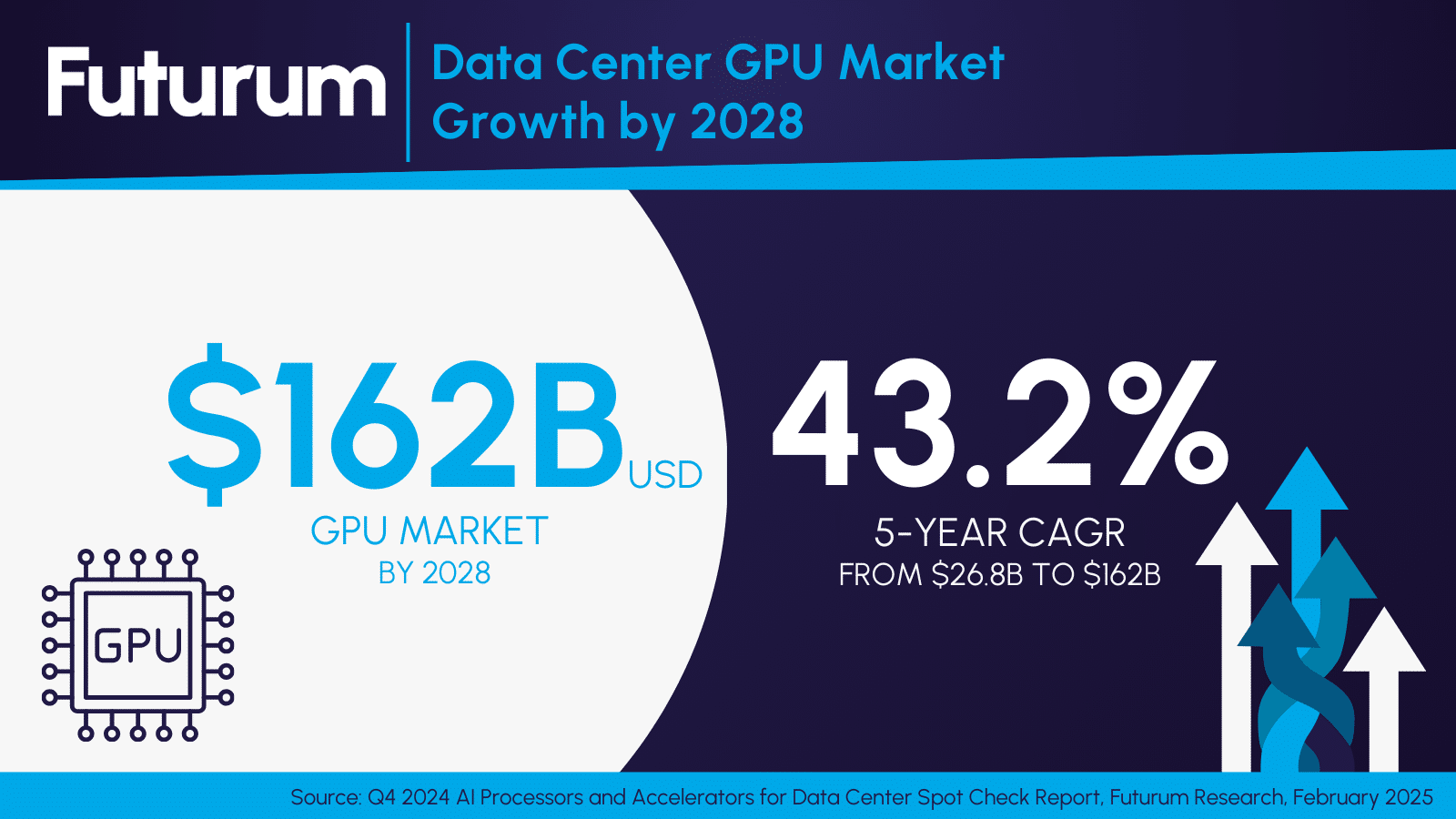Analyst(s): Nick Patience
Publication Date: March 31, 2025
NVIDIA is repositioning itself from being a technology company to an AI infrastructure company, building the so-called AI factories with a strategic roadmap extending four years into the future. At the recent GTC conference in San Jose, founder & CEO Jensen Huang laid out NVIDIA’s product roadmap, including Blackwell, Rubin, and Feynman architectures, giving partners and ecosystem players certainty for multi-year AI infrastructure planning. Here are the key takeaways from NVIDIA’s transformation.
Key Points:
- NVIDIA is repositioning itself as a foundational infrastructure provider for the AI-driven economy, focusing on building the equivalent of “AI factories” that generate tokens rather than traditional IT systems.
- The company has outlined a multi-year product roadmap spanning from current Blackwell architecture through Rubin to Feynman, providing ecosystem stability and planning certainty critical for a foundation technology provider.
- NVIDIA’s approach to AI infrastructure now encompasses three distinct markets: cloud AI infrastructure, enterprise IT infrastructure, and industrial/robotics infrastructure, each with tailored products.
Overview:
NVIDIA has shifted its strategy from being a chip manufacturer to a comprehensive infrastructure provider for the AI-driven economy. During NVIDIA’s GTC event, CEO Jensen Huang emphasized the concept of an “AI factory,” positioning NVIDIA’s technology as the foundation on which businesses build their AI capabilities. This factory metaphor differentiates NVIDIA’s approach from traditional enterprise IT by focusing on maximum output (tokens) per watt of power consumed.
Huang identified three distinct market segments: Cloud AI Infrastructure for hyperscale model training and inference; Enterprise IT AI Infrastructure with products such as DGX Spark for traditional enterprise needs; and Robotics/Industrial AI Infrastructure for physical AI systems requiring specialized infrastructure for training, simulation, and deployment.
NVIDIA’s transition to what Huang calls a “foundational company” requires providing roadmap certainty years in advance, unlike consumer electronics companies that benefit from surprise announcements. The multi-year product roadmap spans from current Blackwell architecture through Rubin to Feynman – revealing the company’s long-term vision.
Figure 1: Data Center GPU Market Growth

According to Futurum Intelligence data, the data center GPU market is expected to grow at a 43.2% CAGR over the next few years and reach $162 billion by 2028. This massive growth underscores the strategic importance of NVIDIA’s positioning as a foundational infrastructure provider.
While hardware gets much attention, Huang repeatedly emphasized that NVIDIA’s true strength lies in its software. He highlighted the software libraries NVIDIA has developed as his favorite demonstration of the company’s investments. New software offerings such as Dynamo (described as the “operating system of an AI factory”) demonstrate NVIDIA’s commitment to providing comprehensive infrastructure solutions beyond just GPUs.
NVIDIA sees itself playing a major role in agentic AI by providing building blocks, including accelerated computing, NVIDIA NIMs (Inference Microservices), NVIDIA NeMo for building custom genAI apps, and AI blueprints for roles such as customer service agents. This approach leverages both NVIDIA and third-party AI models while relying heavily on partnerships with cloud providers, data platforms, system integrators, and ISVs.
Huang also addressed the transition to cloud-native approaches for AI, even for on-premises infrastructure. He described NVIDIA’s smallest offerings as “cloud computers” that users interact with through browsers rather than traditional interfaces. This vision suggests a future where all AI computing follows a cloud-native model regardless of physical infrastructure location.
The full report is available via subscription to the AI Software & Tools IQ service from Futurum Intelligence—click here for inquiry and access.
Futurum clients can read more about it in the AI Software & Tools Intelligence Portal. Nonclients can learn more here: AI Software & Tools Practice.
About the Futurum AI Software & Tools Practice
The Futurum AI Software & Tools Practice provides actionable, objective insights for market leaders and their teams so they can respond to emerging opportunities and innovate. Public access to our coverage can be seen here. Follow news and updates from the Futurum Practice on LinkedIn and X. Visit the Futurum Newsroom for more information and insights.
Author Information
Nick is VP and Practice Lead for AI at The Futurum Group. Nick is a thought leader on the development, deployment and adoption of AI - an area he has been researching for 25 years. Prior to Futurum, Nick was a Managing Analyst with S&P Global Market Intelligence, with responsibility for 451 Research’s coverage of Data, AI, Analytics, Information Security and Risk. Nick became part of S&P Global through its 2019 acquisition of 451 Research, a pioneering analyst firm Nick co-founded in 1999. He is a sought-after speaker and advisor, known for his expertise in the drivers of AI adoption, industry use cases, and the infrastructure behind its development and deployment. Nick also spent three years as a product marketing lead at Recommind (now part of OpenText), a machine learning-driven eDiscovery software company. Nick is based in London.